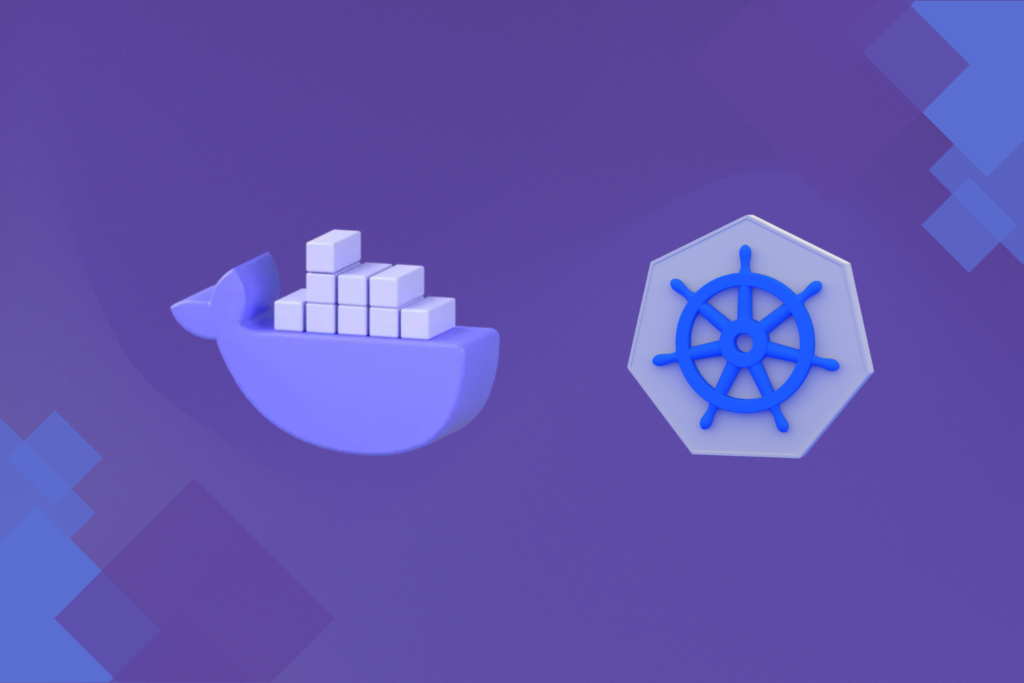In DevOps, orchestrating and managing containerized applications efficiently is a key consideration. Two powerful tools, Kubernetes and Docker, often find themselves in the spotlight, each offering distinct capabilities for container orchestration. The decision of whether to use Kubernetes, Docker, or both depends on various factors, necessitating a nuanced understanding of their roles in the DevOps ecosystem. Moreover, acquiring a DevOps Certification further enhances the expertise required to make informed decisions in container orchestration. In this exploration, we unravel the considerations for choosing between Kubernetes vs Docker, shedding light on when each tool is the optimal choice.
What is Docker?
Docker is a platform that aims to make it easier to develop, ship, and operate software in isolated containers. Containers provide portability by isolating a program and its dependencies from its host system. Docker’s intuitive interface makes it simple for programmers to create, distribute, and execute software together.
When to Choose Docker:
Local Development Environments: Docker is ideal for local development environments, enabling developers to replicate production environments on their local machines. The possibility of “it works on my machine” problems is mitigated by maintaining this level of uniformity between development and production.
Single-Container Applications: For smaller applications that can be encapsulated within a single container, Docker is a lightweight and efficient choice. Without intricate orchestration, it streamlines the deployment process for stand-alone apps.
Resource Efficiency: Docker is known for its resource efficiency. It has less burden on the system and may be used when efficiency is more important than raw processing power.
What is Kubernetes?
A powerful container orchestration technology, Kubernetes (or K8s), streamlines the deployment, scaling, and management of containerised applications. It offers a framework for large-scale container deployment and management, simplifying the management of distributed applications that span several containers.
When to Choose Kubernetes:
Scalability and Complex Deployments: Kubernetes shines in scenarios where applications must scale horizontally, handling varying workloads seamlessly. It is particularly useful for managing microservice-heavy, multi-container systems.
High Availability and Fault Tolerance: For applications requiring high availability and fault tolerance, Kubernetes offers built-in features like automated load balancing, self-healing, and rolling updates. It guarantees that programmes won’t go down and can handle disruptions.
Multi-Cloud and Hybrid Environments: Kubernetes is well-suited for organisations embracing multi-cloud or hybrid cloud strategies. It hides the specifics of each cloud provider’s architecture by offering a uniform orchestration layer.
Combining Docker and Kubernetes: The Power Duo
Docker and Kubernetes are sometimes framed as rivals, although they complement one another. In contrast to Kubernetes, which focuses on orchestration, Docker is mainly a containerisation platform. Common practices include using Docker to develop and distribute applications in container form, followed by Kubernetes to manage and orchestrate those containers in a production setting.
Development to Production Transition: Docker is advantageous during the development phase, allowing developers to easily containerise applications. When an app is ready for release, Kubernetes takes over to ensure scalability, load balancing, and availability go off without a hitch.
Microservices Architecture: In a microservices architecture, where applications are composed of multiple, loosely coupled services, Docker can containerise individual microservices. Kubernetes’ robust orchestration capabilities subsequently handle these microservices’ deployment, scalability, and intercommunication.
Containerised Workloads at Scale: When dealing with containerised workloads at scale, leveraging Docker and Kubernetes is a common strategy. While Kubernetes offers effective orchestration and control tools, Docker streamlines the containerisation process.
Considerations for Decision-Making: Kubernetes vs. Docker
Application Complexity: Evaluate the complexity of your application. Docker may be enough for single-container, simple applications. On the other hand, Kubernetes becomes more attractive if your application is distributed and has many services and dependencies.
Scalability Needs: Consider your scalability requirements. Kubernetes provides powerful scaling options if your application requires horizontal scalability and can manage fluctuating workloads. However, Docker works well in less complex scaling situations with fewer concurrent users.
Resource Constraints: Assess the resources available in your surroundings. Since Docker uses fewer resources, it might be more suitable for situations with limited supplies. While Kubernetes is strong, it may demand more resources than other options.
Conclusion
Kubernetes and Docker are two options in the rapidly changing DevOps world, but which one is best for you will depend on your organisation’s apps and architecture. Compared to Kubernetes, which orchestrates big, scalable, and distributed workloads, Docker’s simplicity and efficiency shine when dealing with smaller applications. Organisations may adjust their DevOps approach to meet their specific needs if they know the benefits each tool provides and how they can work together. Whether you choose Docker, Kubernetes, or a hybrid of the two, the success of your containerised apps in the ever-changing world of DevOps will depend on the quality of your choices.
